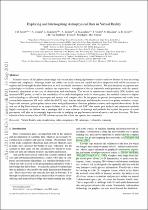| dc.description.abstract | Scientists across all disciplines increasingly rely on machine learning algorithms to analyse and sort datasets of ever increasing volume and complexity. Although trends and outliers are easily extracted, careful and close inspection will still be necessary to explore and disentangle detailed behaviour, as well as identify systematics and false positives. We must therefore incorporate new technologies to facilitate scientific analysis and exploration. Astrophysical data is inherently multi-parameter, with the spatial-kinematic dimensions at the core of observations and simulations. The arrival of mainstream virtual-reality (VR) headsets and increased GPU power, as well as the availability of versatile development tools for video games, has enabled scientists to deploy such technology to effectively interrogate and interact with complex data. In this paper we present development and results from custom-built interactive VR tools, called the iDaVIE suite, that are informed and driven by research on galaxy evolution, cosmic large-scale structure, galaxy–galaxy interactions, and gas/kinematics of nearby galaxies in survey and targeted observations. In the new era of Big Data ushered in by major facilities such as the SKA and LSST that render past analysis and refinement methods highly constrained, we believe that a paradigm shift to new software, technology and methods that exploit the power of visual perception, will play an increasingly important role in bridging the gap between statistical metrics and new discovery. We have released a beta version of the iDaVIE software system that is free and open to the community. | en_US |

